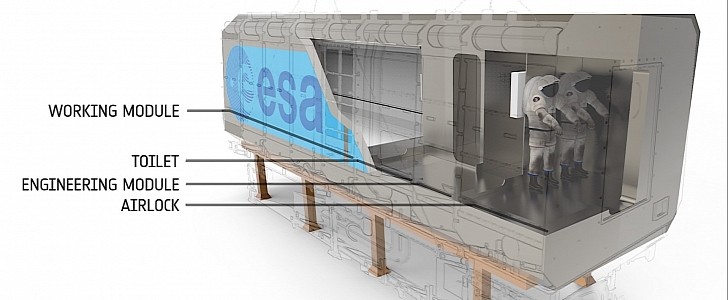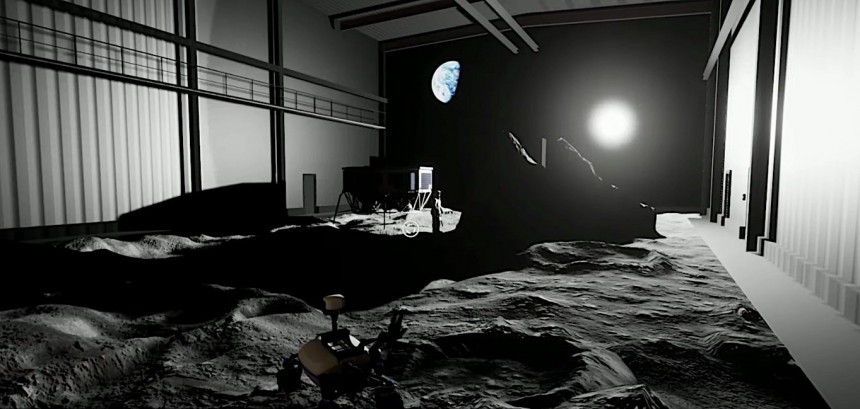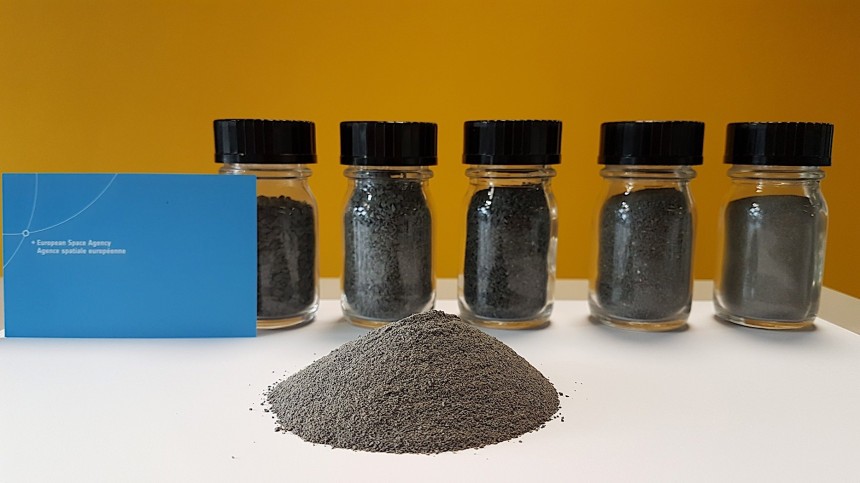More than half of a century ago, humanity touched with its own feet the surface of an alien world. Not a full-blown planet, but that bright night light that has been with us forever, the kind Moon.
So, we went there, hopped around for a bit, left some mess behind, as we humans usually do wherever we go, and then left, seemingly forever. Only that’s not the case, as NASA’s Artemis program is about to turn that forever abandonment into just a “very long time.”
Despite some issues that don’t seem to go away with the Space Launch System rocket, the Artemis program kind of - sort of still is on track to land astronauts on the Moon by the end of the current decade.
But not only the Americans are now targeting the Moon, but the Chinese, Russians, and Europeans alike. Of them all, thanks to its deep involvement in several NASA projects, including Artemis, the European Space Agency (ESA) seems to have the highest degree of knowledge of the requirements for Moon exploration.
To help both its astronauts and those of partner nations better understand what they’re about to face, a brand new facility is being built in Cologne, Germany, at the European Astronaut Centre (EAC).
The facility is called LUNA, and has been in the works since 2015. Now in final planning stage, it is supposed to break ground in the second quarter of the year, and be ready to receive astronauts for training by the end of 2022.
Heralded as something that would “close a gap between the Space Station and existing analog training to prepare for unique lunar challenges,” LUNA will spread over 1,000 square meters (10,700 square feet), and will include a simulation of the lunar surface, preparatory rooms, lab space and supporting infrastructure. Separately, a habitation module will be constructed.
The largest portion of the facility, 700 square meters (7,500 square feet), will be occupied by a regolith testbed, in fact a replica of the Moon’s surface made from a lunar dust simulant called EAC-1. It's something that comprises, as per ESA, “volcanic powder from eruptions from the nearby Eifel volcanic region around 45 million years ago.”
The place will have controllable illumination to make it able to mimic lighting conditions across a lunar day-night cycle.
The habitation module, called Future Lunar Exploration Habitat (FLEXHab), will be built to mimic a potential future human base on the Moon, allowing astronauts to live and work in otherworldly conditions. Both locations will be powered by solar energy and fuel cells, to keep their footprint to a minimum.
ESA is building LUNA together with German Aerospace Centre DLR, and plans to have it become, as fast as possible, the place where all astronaut training and exploration simulation will take place. Given how it’s supposed to be ready this year, it will most likely be involved in the training of the Artemis astronauts as well.
Aside for humans, LUNA will allow for the testing of robotic systems, human-machine interactions, infrastructure build-up and maintenance, virtual and augmented reality trials, and research and development of materials, tools and manufacturing for in-situ resources utilization by future missions to the Moon.
“The European Astronaut Centre together with its integrated team comprising DLR, CNES and ASI personnel currently offers astronaut training for the International Space Station, as well as analogue training in the field and underwater,” said in a statement at the end of last year ESA project manager Juergen Schlutz.
“LUNA will close a gap between the Space Station and existing analog training to prepare for unique lunar challenges such as transport capabilities, surface mobility, communication setups and autonomy, and the harsh dust environment on the Moon.”
Despite some issues that don’t seem to go away with the Space Launch System rocket, the Artemis program kind of - sort of still is on track to land astronauts on the Moon by the end of the current decade.
But not only the Americans are now targeting the Moon, but the Chinese, Russians, and Europeans alike. Of them all, thanks to its deep involvement in several NASA projects, including Artemis, the European Space Agency (ESA) seems to have the highest degree of knowledge of the requirements for Moon exploration.
To help both its astronauts and those of partner nations better understand what they’re about to face, a brand new facility is being built in Cologne, Germany, at the European Astronaut Centre (EAC).
Heralded as something that would “close a gap between the Space Station and existing analog training to prepare for unique lunar challenges,” LUNA will spread over 1,000 square meters (10,700 square feet), and will include a simulation of the lunar surface, preparatory rooms, lab space and supporting infrastructure. Separately, a habitation module will be constructed.
The largest portion of the facility, 700 square meters (7,500 square feet), will be occupied by a regolith testbed, in fact a replica of the Moon’s surface made from a lunar dust simulant called EAC-1. It's something that comprises, as per ESA, “volcanic powder from eruptions from the nearby Eifel volcanic region around 45 million years ago.”
The place will have controllable illumination to make it able to mimic lighting conditions across a lunar day-night cycle.
ESA is building LUNA together with German Aerospace Centre DLR, and plans to have it become, as fast as possible, the place where all astronaut training and exploration simulation will take place. Given how it’s supposed to be ready this year, it will most likely be involved in the training of the Artemis astronauts as well.
Aside for humans, LUNA will allow for the testing of robotic systems, human-machine interactions, infrastructure build-up and maintenance, virtual and augmented reality trials, and research and development of materials, tools and manufacturing for in-situ resources utilization by future missions to the Moon.
“The European Astronaut Centre together with its integrated team comprising DLR, CNES and ASI personnel currently offers astronaut training for the International Space Station, as well as analogue training in the field and underwater,” said in a statement at the end of last year ESA project manager Juergen Schlutz.
“LUNA will close a gap between the Space Station and existing analog training to prepare for unique lunar challenges such as transport capabilities, surface mobility, communication setups and autonomy, and the harsh dust environment on the Moon.”












